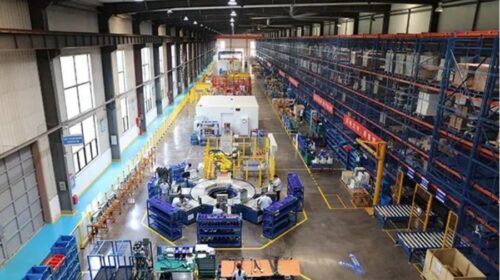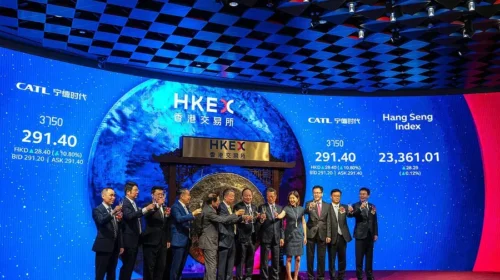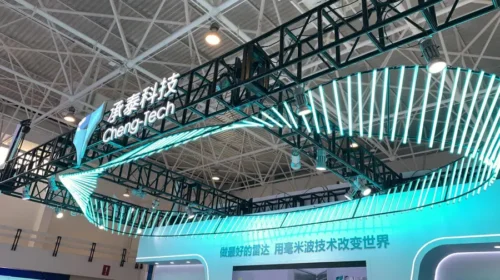Daqo Eyes Product, Geographic Diversification With Massive Expansion

Company will spend $1.3 billion on first phase of a major new production base in Inner Mongolia that will ultimately triple its polysilicon capacity
Key Takeaways:
- Daqo has announced a major new investment, reportedly worth $5.2 billion, that will triple its polysilicon production capacity
- Move will diversify the company beyond its politically sensitive Xinjiang base, and also add several related silicon products to its mix
By Doug Young
There are a few different ways to look at the announcement of a massive new investment this week by polysilicon maker Daqo New Energy Corp. (DQ.US).
On the plus side, the investment will ultimately triple the company’s current capacity for the main raw material used to make solar panels, presumably raising its revenue by a similar amount. In another positive, the investment will also diversify the company in terms of geography and its actual product mix as it adds several related silicon products to its portfolio.
The major downside, which we’ve written about previously, is that polysilicon prices could be sharply lower by the time the new capacity begins coming on stream due to a looming bubble for the sector.
Investors gave the plan, which carries an 8.55 billion yuan ($1.3 billion) price tag for its first phase, a decidedly mixed response. The company’s stock fell 6.5% the day of the Monday announcement, but then gained all that back and more the next day. As of Wednesday’s close the stock was slightly below pre-announcement levels.
All that said, we’ll zero in on the actual plan, starting with the headline figure saying it will give Daqo an additional 200,000 metric tons (MT) of annual capacity for its core polysilicon product. It will add 100,000 MT of that new capacity in the project’s first phase, with construction set to begin early next year and be completed by the second quarter of 2023.
To put that in perspective, Daqo’s current capacity stood at 75,000 MT of polysilicon at the end of this year’s third quarter, and will rise to just over 100,000 MT when a new project starts producing early next year.
So, this newest project will roughly double Daqo’s capacity by mid-2023 and eventually triple the amount, if and when future phases are completed. That’s quite aggressive, though perhaps justified, since solar power is rapidly expanding as one of the leading energy sources of the future as the technology becomes commercially competitive with traditional fossil fuels. The drive to solar is also getting a big boost from countries racing to meet carbon-reduction targets in the drive to slow global warming.
The downside, of course, is that Daqo is not the only company adding new capacity at a breakneck pace. Many of its rivals are rolling out similar plans, following a huge jump in polysilicon prices over the past year. The run-up has all the signs of a building bubble, which many expect to start bursting next year. Such boom-bust cycles often wreak havoc on companies’ finances over the short term, though history has shown that excess capacity ultimately gets absorbed and fully utilized over the longer term.
Diversification
Then there are the diversification elements. Daqo revealed that in addition to its core polysilicon, the new plan will see it start manufacturing silicon used by the semiconductor sector, as well as silicone, which is used in a wide range of products from sealants to lubricants and insulation.
The first phase of the expansion will see Daqo add a relatively modest 1,000 MT of capacity of silicon for the semiconductor industry, which will ultimately be expanded to 21,000 MT in later phases. That investment looks prudent as the market for high-tech computer chips also looks set to explode with the arrival of an internet of things (IoT) era, where devices can talk to each other and gather information over the internet.
There’s no mention of any investment in silicone manufacturing in the expansion’s first phase, though Daqo says it ultimately plans to build 200,000 MT of annual capacity for the material. The bigger roadmap also includes plans for 300,000 MT of annual capacity for unspecified “silicon metal projects.”
Daqo didn’t provide any other investment figures besides the 8.55 billion yuan price tag for the expansion’s first phase. But a report in PV Magazine said the overall expansion would carry an estimated price tag of 33.3 billion yuan, or more than $5 billion.
That leads us into the second element of this diversification move, which involves geographical diversification. In this case the big new expansion is being built in the city of Baotou in China’s Inner Mongolia region. For those less familiar with Chinese geography, Daqo’s headquarters and most of its current operations are in Xinjiang, which is relatively close to and shares a similar arid climate with Inner Mongolia.
This move into Baotou is important for two reasons. First, the city of Baotou will almost certainly provide big assistance to Daqo for such a major new project in forms such as cheap or even free land, preferential taxes and cheap loans from local state-owned banks. Local government entities will also almost certainly be investors in the project, and Daqo says in the announcement that it has entered into a “investment agreements” with local governments in two Baotouo districts where the new capacity will be built.
The other significance of the geographic move is more political. Daqo has come under fire this year because it is based in Xinjiang, which the U.S. and other western countries have cited as a place where human rights violations are occurring. The U.S. even sanctioned Daqo earlier this year over the issue, though the company said it would feel minimal impact and has stressed it does not engage in any practices at the heart of the western complaints.
So, from a political standpoint, this move out of Xinjiang could help to buffer the company from future criticism and political risk.
All of that could help to lift Daqo’s battered stock, which now trades near a 52-week low and looks quite undervalued compared to both domestic and global peers. The company’s forward price-to-earnings (P/E) ratio of 3.1 looks quite anemic compared with German rival Wacker Chemie’s (WCH.DE) 13.4. It is also well below the 24.5 for domestic rival Tongwei (600438.SH) and is less than half the trailing P/E of 8.1 for Xinte Energy (1799.HK), which is also based in Xinjiang.
To subscribe to Bamboo Works free weekly newsletter, click here






